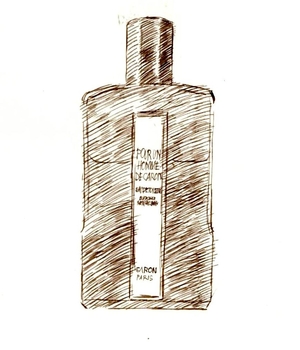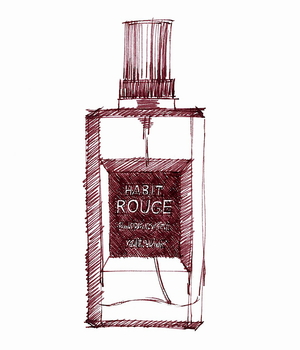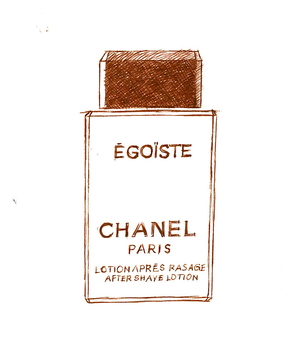Tagged With ‘vanilla’
Caron
Pour un Homme
12 June, 2015
 I’ve known about Caron’s Pour un Homme for many years – it’s often been hailed as one of the classics of men’s perfumery, and a couple of friends used to enthuse about it – but on the odd occasions when I’d tried it I couldn’t really see what there was to get so excited about. Despite its heritage it came in a cheap-looking bottle, and the testers I smelled did nothing much for me; to be honest I thought it was a bit dull.
I’ve known about Caron’s Pour un Homme for many years – it’s often been hailed as one of the classics of men’s perfumery, and a couple of friends used to enthuse about it – but on the odd occasions when I’d tried it I couldn’t really see what there was to get so excited about. Despite its heritage it came in a cheap-looking bottle, and the testers I smelled did nothing much for me; to be honest I thought it was a bit dull.
But then I got a new bottle, and either Richard Fraysse, Caron’s in-house perfumer, has smartened up the fragrance formula, or the scales have fallen from my eyes. The new bottle is certainly tidier than the old ones were: even my enthusiastic friends admitted that it looked like members of the Caron family had stuck the labels on, rather wonkily, by hand.
Actually the Carons haven’t been involved with Parfums Caron since the early 1900s, when Anne-Marie Caron sold her family perfume shop in the Rue de la Paix in Paris to the brothers Ernest and Raoul Daltroff. The brothers came from a cosmopolitan Russian Jewish family – their father ran a railway company in Saône et Loire – but for some reason they decided to get into perfume.
There doesn’t seem to be any record of Ernest training in perfumery, but he evidently had a natural talent, and he was helped, from 1906, by a one-time dressmaker called Félicie Wanpouille, who became what we’d now call the company’s creative director. Between them they developed a series of perfumes, with striking packaging and beautiful Baccarat bottles, and in 1911 they had their first big success with Narcisse Noir (still available but completely reformulated and apparently nothing like the original).
In 1919 came Tabac Blond, which for many contemporaries captured the spirit of the so-called Jazz Age, and more particularly to the outrageous young women who had taken to smoking cigarettes in public (again it’s still on the shelves, but the modern version smells nothing like the original, which was more like the wonderful and still untampered-with Knize Ten). Daltroff made Félicie Wanpouille co-owner of Caron in 1922.
Pour un Homme arrived in 1934, and has since established itself as one of the all-time fragrance classics. On the face of it it’s a simple enough smell: lavender, lavender and more lavender. But perfumes (at least good ones) are rarely as simple as they might seem, and Pour un Homme is no exception.
Like Guerlain’s ground-breaking Jicky from 1889, it mixes lavender with vanilla, but with very different results: sniffing them side by side is a good reminder of why a list of ingredients tells you very little about what a perfume will actually smell like. Jicky has a strange, sexy but disconcerting smell, which has sometimes been compared with cat wee, and it’s the (mostly synthetic) vanilla that you notice first.
Pour un Homme, by contrast, smells very like real lavender when you brush its leaves, and (to me at least) it’s got an almost minty cool freshness. It’s a while before you smell the vanilla – and actually if I didn’t know it was in there I’m not sure I’d have even noticed. Though the lavender smell stays for a long time, this extra touch of vanilla (plus some nice but unobtrusive musks) adds a gently comforting character, without being sweet or cloying in any way.
All in all I think Pour un Homme is a lovely fragrance, if not one that’s likely to get you noticed at a party; this is something I’d wear for myself rather than for other people.
As for its brilliant creator, Ernest Daltroff, he came to a rather sad end. Though he escaped the Nazi invasion of France in 1939, moving first to Canada and then New York, he was by this time in his seventies, frail and depressed, and he died just three years later.
Félicie Wanpouille continued running Caron until she retired in 1962, when she sold the company to Parfums Revillon. In 1967 the brand was bought by the American pharmaceuticals company AH Robins, which opened a flagship store on the Avenue Montaigne. In 1988 Caron was sold again, this time to a French hair-products and cosmetics group, whose owner, Patrick Alès, had long admired the brand. Today it’s run by Patrick’s son Romain. Long may it prosper.
Guerlain
Habit Rouge
27 April, 2015
 ‘Mass luxury’ may be the oxymoron of the moment, but the name of Habit Rouge is a nod back to a time when perfume really was a luxury enjoyed only by the stinking rich (eg the family Guerlain), among whom fox-hunting was a favourite pursuit.
‘Mass luxury’ may be the oxymoron of the moment, but the name of Habit Rouge is a nod back to a time when perfume really was a luxury enjoyed only by the stinking rich (eg the family Guerlain), among whom fox-hunting was a favourite pursuit.
Habit Rouge, in this context, is the French term for what British toffs call (with typical bourgeois-baiting mystification) ‘hunting pinks’, the scarlet riding jackets worn while hunting the fox. But that’s as far as the hunting or riding references go, which is probably a good thing, if you know what an actual fox or a horse-stable smells like.
Created by the last of the great Guerlain family perfumers, Jean-Paul, and launched in 1965, Habit Rouge was only the third Guerlain fragrance to be aimed at men. In character it is very different from its immediate predecessor, Vetiver, launched in 1959. While Vetiver is elegantly earthy (a brilliant contradiction in terms) and ineffably masculine, Habit Rouge is much more dandified, with a sharp, powdery sweetness that some people love but that makes others gag – imagine lemon sherbert in liquid form and you won’t be far wrong.
According to my friend the perfumer Roja Dove (who worked at Guerlain for twenty years), it ‘has an extraordinary volume of hesperidic materials, especially bergamot and lemon, which make up in excess of 25 per cent of the formula. Without question you can “feel” their effervescence.’It’s so zingy to start with that I wonder whether it might even contain a touch of aldehydes – the chemicals that give Chanel No. 5 its champagne fizz.
With all that lemon you’d imagine it would smell like an eau de cologne, but like other classic Guerlain perfumes Habit Rouge has great depth and complexity, and in the terminology of the perfume world it actually counts as an ‘oriental’-style fragrance, as behind the sherbert there’s a surprising amount of spice as well.
Though the version we have today was apparently ‘cleaned up’, as the industry jargon has it, by another fine perfumer, Edouard Fléchier, to comply with updated regulations governing the use of potentially harmful ingredients, it still smells wonderfully rich, with traces of vanilla and patchouli for those who smell it carefully.
Habit Rouge also lasts and lasts, which for me is an added plus when a perfume is as great as this – for anyone on a limited budget it’s hard to justify spending £70 or so on something that vanishes within an hour of putting it on. Definitely worth hunting down.
Chanel
Egoïste
22 July, 2014

The first thing I think when I smell Egoïste is ‘spicy!’ It’s a big, bold, in-your-face fragrance, well-suited to its name, which doesn’t suit everyone – in fact I’ve never thought it really suited me. But if you have the confidence to carry it off it’s a superb perfume of its kind.
Egoïste was created by Chanel’s long-standing in-house perfumer, Jacques Polge, and released in 1990 with the kind of blitzkrieg advertising that Chanel does so well. Possibly too well, since I suspect that fewer people remember the perfume than Jean-Paul Goude’s brilliant film, in which a bevy of deranged-looking models screamed ‘Egoïste!’ while slamming open and shut the blinds of a scaled-down version of the Hôtel Carlton in Cannes.
But back to the perfume. The spiciness of Egoïste is of the sneeze-inducing peppery kind, and for a long time I assumed it was just that – black pepper, mixed with the scents of (among other things) rose, vanilla and sandalwood. But looking at the ingredients again I wonder if at least some of the pepperiness actually comes from carnation – not the scentless supermarket kind but those wonderful old-fashioned ‘clove-scented’ carnations, which have an intoxicating, slightly peppery smell all their own.
The reason I rarely wear Egoïste, though, is less to do with its pepperiness than with another of its main ingredients: vanilla. I’ve no doubt that Chanel uses only the finest quality vanilla in its perfumes, but it’s simply not a smell that – in fragrances, at least – I particularly like. Part of the problem is that, for a while, vanilla was so widely used in perfumes aimed at young women, with the result that (to me at least) it smells too sweet and teenage-girly. And it’s such a foody smell as well: I love what vanilla does to chocolate, but I’m not sure I want to wear it on my skin.
Still, like any work of great skill, I admire its artistry, even if it doesn’t seem to suit me. If you haven’t already tried it then give it a go and see if it works for you.